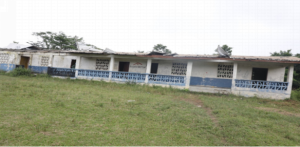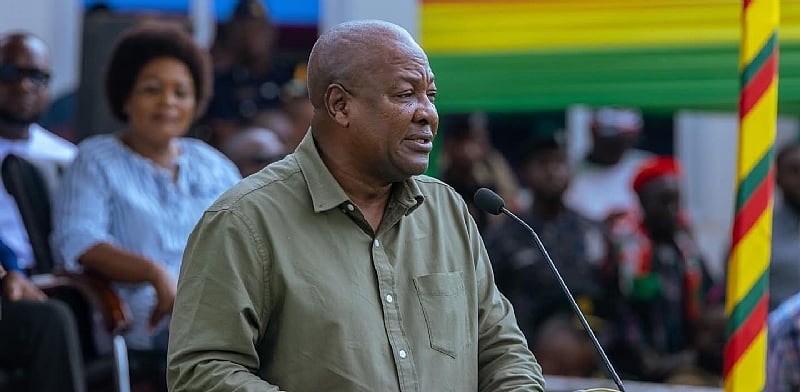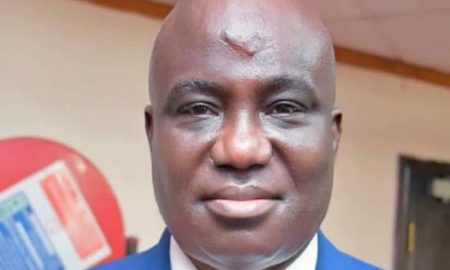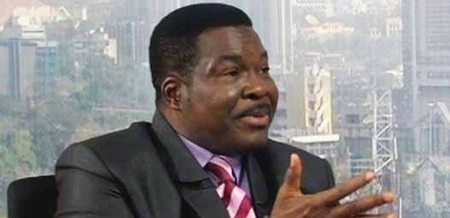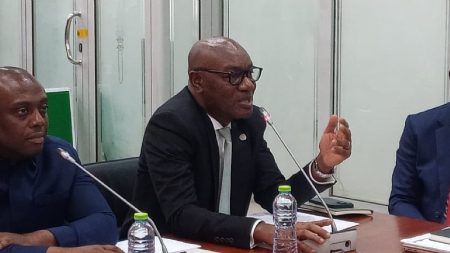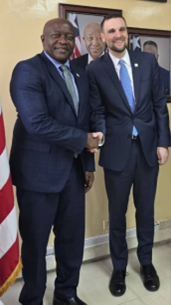A Promise of Transformation: Mahama’s Vision for the Oti Region’s Infrastructure and Development
Former President John Dramani Mahama concluded his nationwide “Thank You Tour” with a grand durbar in Dambai, Oti Region, on July 25th. This tour, initiated in Ho on January 24th, spanned all 16 regions of Ghana, allowing Mahama to express his gratitude for the support received during the December 2020 general elections. The culmination of the tour in the Oti Region served as a platform for unveiling an ambitious roadmap for its development, focusing heavily on infrastructure and accessibility. Mahama’s vision for the Oti Region centers around its strategic importance as a transit hub and its potential for economic growth and improved quality of life for its residents.
Central to Mahama’s plan is a comprehensive overhaul of the region’s road network. Recognizing the Oti Region’s crucial role as a conduit for goods and services between the north and south of Ghana, Mahama pledged significant investments to upgrade existing roads and construct new ones. The Eastern Corridor Road, a vital artery for national trade and transportation, was highlighted as a top priority. Mahama guaranteed the expeditious completion of the Nkwanta Kpasah-Oti Damanko segment, assuring that the project is already underway, with contractors mobilized and ready to commence work. He emphasized the government’s commitment to prompt payment of contractors within two weeks of certificate issuance, ensuring a smooth and efficient construction process.
Beyond the Eastern Corridor Road, Mahama outlined a series of critical road projects slated for development under the “Big Push” program. These projects, currently undergoing procurement processes, aim to enhance connectivity within the region and improve access to essential services. Among the highlighted projects are the construction of the Dambai Bridge across the Oti River, a landmark infrastructure project expected to significantly boost transportation and trade within the region. Mahama promised a groundbreaking ceremony for the bridge within the year, signifying the immediate commencement of this pivotal undertaking.
Further road improvements encompass the upgrading of various key routes, including the Okadjakrom-Kwamekrom Road, Apotoase-Atonko Road, Kpassa-Tijansi Road, Hohoe-Jasikan Road, and Nkwanta-Oti Damanko Road. The rehabilitation of the Hohoe-Baika-Jasikan Road and the construction of the Nkwanta-Dambai Road are also slated for development. These projects collectively aim to create a robust and interconnected road network, facilitating smoother movement of people and goods, boosting economic activities, and improving access to healthcare, education, and other essential services.
Mahama’s infrastructure vision extends beyond these immediate projects. He announced that technical costing and procurement processes are underway for additional road projects in the Kete-Krachi, Krachi Nchumuru, and Guan districts. This broader approach aims to ensure comprehensive coverage and address the specific needs of each district, promoting equitable development across the entire Oti Region. In addition, the region’s constituencies will benefit from a focused initiative to construct 10 kilometers of roads annually in each of the Oti Region’s constituencies, totaling 40 kilometers over a four-year period.
Recognizing the region’s unique geographical features, Mahama also explored the potential of inland water systems to enhance transportation and trade. Developing these waterways offers an alternative mode of transport, connecting communities and facilitating the movement of goods and people, particularly in areas where road access may be challenging. This multimodal approach to transportation is crucial for promoting economic growth and ensuring equitable access to opportunities across the region.
Beyond infrastructure development, Mahama’s vision for the Oti Region encompasses improvements in healthcare, education, and sports. He promised the construction of a modern regional hospital, addressing the critical need for enhanced healthcare facilities and services for the region’s residents. The establishment of a university in the region is another key component of Mahama’s plan, aiming to expand educational opportunities and empower the youth with the skills and knowledge necessary for personal and societal advancement. Finally, Mahama pledged to build a modern sports stadium, promoting recreational activities and fostering community development.
In essence, Mahama’s vision for the Oti Region is one of comprehensive transformation. His proposed investments in infrastructure, particularly roads, aim to establish the region as a vital economic hub, facilitating trade and connectivity. The planned improvements in healthcare, education, and sports are designed to enhance the quality of life for residents and create a thriving and prosperous region. This integrated approach to development underscores Mahama’s commitment to addressing the specific needs of the Oti Region and unlocking its full potential for growth and progress. The “Thank You Tour” served not just as an expression of gratitude, but also as a platform to articulate a clear vision for the future of the Oti Region, centered around infrastructure development, improved services, and enhanced opportunities for all its residents.



